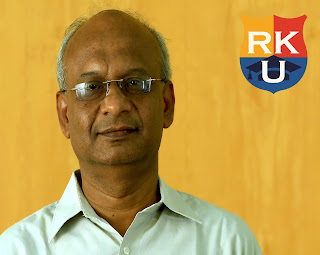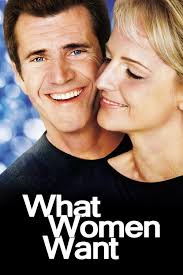Acting on what?
 |
| Dr. Kaushik Dutta Sharma : Associate Professor Centre for Theatre & Acting Skills |
Before the play, comes the rehearsal,
and before rehearsing for the play comes the training of the actor. As for any
singer or dancer, before the performance comes the rigour of training. Of
course there are exceptions, the ‘gifted’, the ones that excelled in acting,
learning it on the go as it were, being in the trade.
An actor’s work does not start with
the analysis of the character or play, it begins before. It starts by acting on
his body and voice. The process is like training in Martial Arts. In Kerala,
the children’s bodies are prepared for Kathakali, a dance form and Kalaripayattu,
a martial art form in the same way. The flexibility, the dexterity and the
surprise moves are exercises that the body is prepared for. The Natyasastra
talks of ‘Chari’, various movements that signify character’s status, mood and
other such characteristics. Even today in
North Bengal, India, during the religious festival of Gajan/Charaka/Gambhira,
a child is tied to the body of a male dancer and ritually moved as a dancing
initiation process known as ‘Chali’. As for vocal sound, besides the control of
song like scale, pitch, volume, a system of different sound boxes lie dormant
to be activated within the human body. To be activated through Nada Yoga like
training based on the ‘chakras’. These different sound boxes situated in the
body, when activated, creates different vibrations, energies, effecting
intimacies and distances, and before even words are added to it. The process
helps the body become a virtuoso that effects the required impact like a well-tuned
instrument.
Acting as a process of manufacturing a
fictive truth as outlined by Stnislavsky, famously pursued by the best of
Hollywood actors and perhaps by a large number of film and stage actors of the world ,is a
system based on the text analysis and the science of psychology as it was during
his time. Method acting and its numerous variants is a system of creating a
character that Stanislavsky hinted at as a journey from communication to
communion. His understanding of the conscious, the sub-conscious and the
super-conscious was a pathway that the actor must walk to create the character.
Character’s full life would only be realised if the actor can detail the
consciousness of the character, internalise the unconsciousness of the
character and therefore be ready for the arrival of the super consciousness of
the character. The actor has to read the text and between the text (the
sub-text) to create a life of the character beyond the play, both before and
after. Method acting is psycho-somatic it is metamorphic. There are a number of
supportive methods to it like Lee Starssberg’s Method, Alexander Technique, and
the Meisner Technique etc. Meyerhold’s experiments with actor’s based on
bio-mechanics gave more thrust to the empowering of the actor’s body. The
training became more focused on the body and gave rise to prophets, theoreticians
and theatre directors like Artaud, Grotowski and Peter Brook. The challenge of
cinema riding on the belief system of photograph as the true recording of
reality rather than painting, became relevant as a more realistic medium and
pushed theatre away from being the synthesis of disparate creative elements, ‘
(Theatre)… cannot exist without the actor-spectator relationship of perceptual,
direct, “ live”communion…it
challenges the notion of theatre as a synthesis of disparate creative disciplines.’It
was a reductionist reaction to the challenge of new technology. Artaud,
reacting to mass radio, film and television, discovered the ‘Spec-actor’ and
unleashed ‘The Theatre of Cruelty’ Peter Brook reinvented theatre through the
Mask. Exposure to the multi-cultural world and the performances of Asia
challenged the actor training model. Contrary to the flow, in between came the
influential phase of Bertolt Brecht and his call for theatre based on the ‘tangible’
truth : that gave birth to an acting style based on ‘Verfremdungseffekt”.
‘The distancing effect is a technique
used in theater and cinema that prevents the audience from losing itself
completely in the narrative, instead making the audience a conscious critical
observer. Brecht and Augusto Boal looked for a theatrical experience that is
not ‘cathartic’ but a call to ‘action.’
Now where does all the above lead to? Exposure
to different styles, contrasting approaches makes you decide your style. At the
end let us say that you are auditioning for a grand musical te, would
choreography and stage combat become a challenge for you? Or let us say a verse
drama, would scanning and notation become a challenge for you? Or a Sanskrit
drama in a language that you know, would movements or oriental ‘presences’ be a
problem for you? Or a rom/com film set on a cosmo set up, would that be a
challenge for you? An experimental short film or a scary web series, how about
them? Do you foresee any challenges as an actor after being trained in the
ensemble of training methodologies noted above?
******
Associate Professor – With a doctoral degree in Folk Theatre from Rabindra Bharati University in Kolkata, Dr. Kaushik Duttasharma is a name to reckon with in the field of Indian television. With a cumulative experience of nearly three decades and having worked as the Associate Chief Producer of ETV Network, Dr. Duttasharma was instrumental in making ETV Bangla the most popular Bengali GEC. Dr. Duttasharma also served as a lecturer in the Department of English at Arunachal University.



Comments
Post a Comment